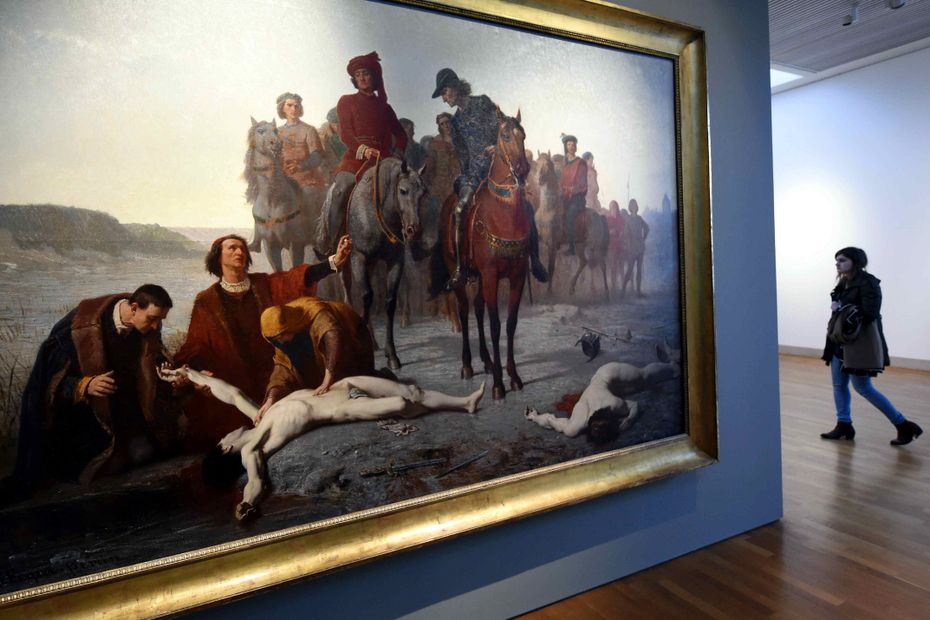544 years ago to the day, on January 5, 1477, tens of thousands of men were going to oppose Nancy. At their head Charles the Bold, Duke of Burgundy and René II, Duke of Lorraine. Back on a historic battle, decisive for the construction of France.
–
We are January 5, 1477. Sunday. Charles the Bold, Duke of Burgundy took up a position on a hill near Nancy. With his men, he awaits the arrival of René II, Duke of Lorraine and his army. He comes from Saint-Nicolas-de-Port, a rallying point for his soldiers. 20,000 men for the Duke of Lorraine, between 6 and 10,000 on the other hand for the Bold.
It was snowing in the morning of January 5. A powder that covers the fighters. Charles Le Téméraire gets on his horse called Moreau. The anecdote has it that when his squire handed him his helmet, the crest with the golden lion which was at the top fell to the ground. The Bold interpreted it as a bad omen.
Surprise avoidance
Two Burgundian deserters, captured, reveal to René II the configuration of the adversary. The left flank is protected by the Meurthe river and the right flank by the Saurupt wood.
Due to the heavy snowfall that morning, visibility is reduced. A frontal attack is considered disastrous.
René II then puts his troops in working order by mounting his gray mare, La Dame. Vautrin Wisse, the Lord of Rosières-aux Salines is in charge of bypassing the Bois de Saurupt. Swiss pikemen, halberdiers and couleuvriniers are ready to attack. The belligerents are exhausted by the bypass maneuver and the heavy snow, but they are in number, more than 10,000 on the right flank.
At 1:00 p.m., the snow stopped falling and the sun finally appeared as a signal, the order to assault was given. The surprise is total for the troops of Charles the Bold. The powerless artillery could not repel the flow of Swiss, Lorraine, Alsatian and German fighters. The Burgundians are still alive.
The army facing Le Téméraire also went on the offensive. The English arches try to resist but end up giving in to this human tide. The Duke of Burgundy and his men are assaulted from all sides. He fell back towards the Commanderie Saint-Jean. Wounded, he ended up collapsing, defeated by René II and his troops. Claude de Bauzemont, lord of Saint-Dié, finished off the Grand Duke with an ax on the head.

“Portrait of Charles the Bold, Duke of Burgundy” (mid-16th century) in the Bellegarde gallery of the Dijon Museum of Fine Arts.
•
© PHOTOPQR / L’EST REPUBLICAIN / MAXPPP
–
The origins of this Battle of Nancy
When René II acceded to the Duchy of Lorraine on August 2, 1473, Charles of Burgundy – said the Bold, challenged this principality to him. He only wants to own it. But the Battle of Nancy will put a definitive end to the claims of the Duke of Burgundy.
The benefits of this battle
The main immediate beneficiary of this battle is the King of France Louis XI. Very quickly, he invaded part of the Burgundy States.
But the marriage, the same year, of the sole heiress of the Bold Marie of Burgundy, to Maximilian of Austria, brings to the house of Habsburg, the county of Charolais, the Franche-Comté as well as the Burgundian Netherlands, threatening encircling France for more than two centuries. It is the starting point of a long rivalry between France and the Habsburg states.


The church of Notre-Dame-de-Bonsecours.
•
© PHOTOPQR / THE REPUBLICAN EAST
–
A heritage for Nancy
Many places in Nancy recall the memory of this battle of January 5, 1477. On the very site of the battle, René II built the Notre-Dame-de-Bonsecours church.
In memory of the defeat of the Bold, the city adopted the Thistle as its emblem and the motto Not inultus premor, (Don’t touch me, I sting). In addition to the church of Notre Dame-de-Bonsecours, a monument on the Place de la Croix de Bourgogne commemorates this battle.
Eugène Delacroix painted a painting of the Battle of Nancy that you can admire at the Musée des Beaux-Arts (photo illustration).
–


